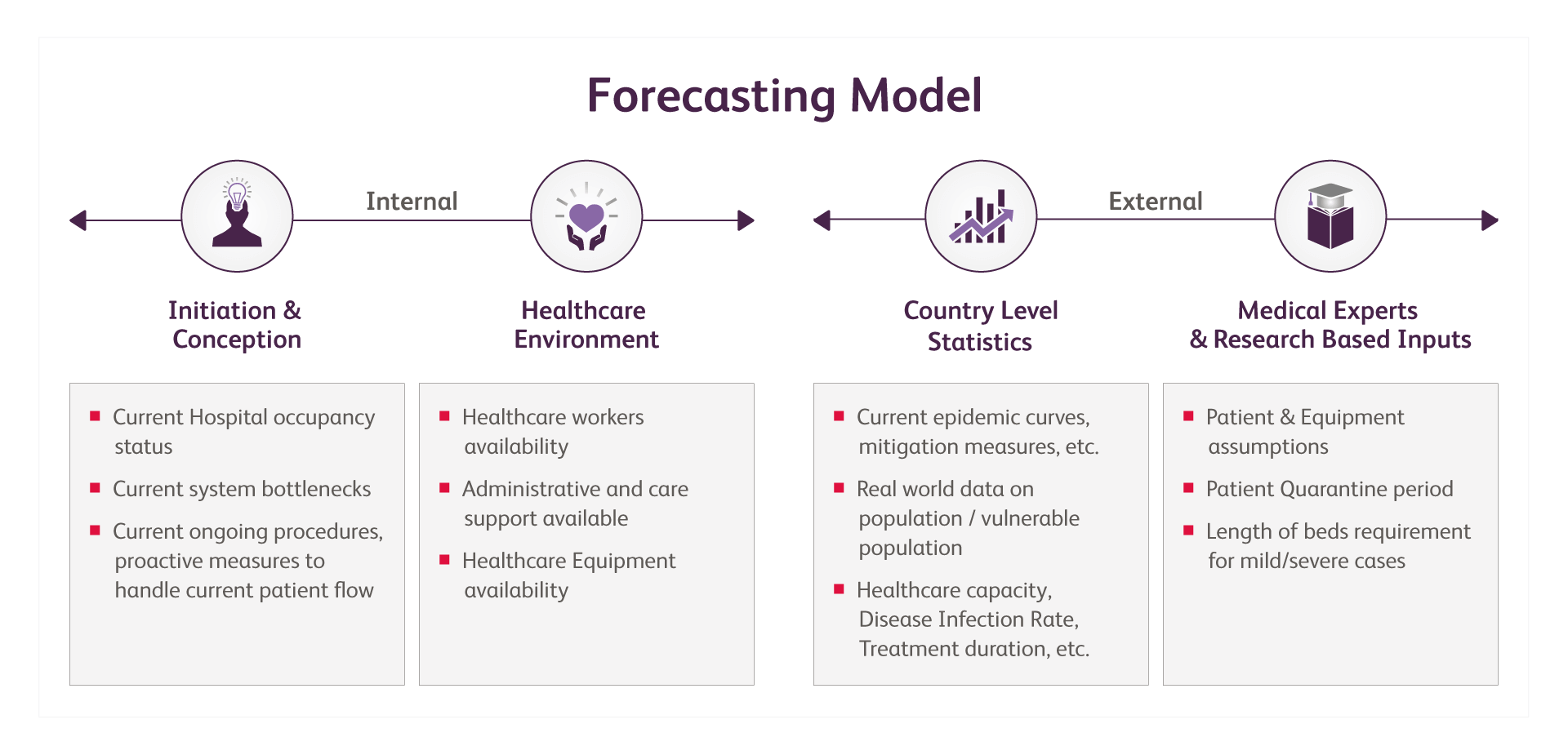Covid-19 has hit different areas of the healthcare industry like no other, as various hospitals have been struggling to keep-up with demand and plan for the future, how will hospitals make-up for these limitations? As of publication, there seems to be no indication when the end of this pandemic will be. However, what are some ways that hospitals can stay ahead in unpredictable times?
The increased demand on healthcare services will be compounded by the apparent increased risk of infection among healthcare workers. The government has made recommendations for case isolation, social distancing, and household quarantine intended to reduce the peak of the epidemic and the resulting pressure on hospitals. Medical beds and critical care capacity requires substantial expansion, and this is already being enabled by repurposing the healthcare (HC) staff and resources. This has caused a tremendous and critical risk for HC workers along with the patients they treat.
Some questions that hospitals had to ask themselves during Covid-19 have been:
- How many new cases are expected in the region?
- Given the impact of the outbreak, what should the hospital’s short-term strategy be? Will this strategy still work after 6 months?
- Do we have enough beds and ventilators to deal with current needs?
- Given the high risk of infection and quarantine among health care workers, will there be enough staff to provide care to patients?
Prior to Covid-19, hospitals claimed to have a high level of operational efficiency using just-in-time supply management, however they may be ill-equipped for an epidemic surge.
Strategy One: Gaining a short-term perspective
Although there is no such thing as a perfect forecast, having some visibility into short-term demand provides hospitals and other care units the opportunity to plan patient flow. This can be done by actively monitoring the situation, and then efficiently managing necessary equipment based on the outlook.
Various researchers have worked on designing short-term forecast models based on the concepts of time series. For example, forecasting the Covid-19 cases is based on time series modeling, in conjunction with AI/ML techniques. Short-term strategic decisions can be fueled by recurring 10-day forecast predictions. This can help hospitals tackle immediate problems, and then have the bandwidth to shift their focus on long-term solutions.
Strategy Two: Estimating and managing sudden spikes
Estimating the resources for patients and healthcare workers has become absolutely crucial. Any delay in providing essential health equipment and provisions may result in unsafe conditions for healthcare workers, in-patients, outpatients, consultations and laboratories.
Such essential health equipment includes:
- Personal Protective Equipment (PPE) such as gloves (heavy duty/examination/surgical), face shield, masks, apron, goggles, etc.
- Estimating diagnostics & hygiene equipment like safety boxes, bio-hazardous bags, alcohol-based sanitizers, soaps, etc.
- Specialized lab equipment such as triple packaging boxes, viral transport mediums, lab kits for extracting, screening and confirmation, RT PCR kits, etc.
There is enough data from across the world on Covid-19’s infection rates, and the impact it has, for care providers to make a rough forecast when planning for the future. Forecasts will be able to consider population density, social distancing policies, the time it takes to process tests, and so on. An educated (yet rough) forecast can help hospitals anticipate peak times, so that healthcare providers can take necessary steps to avoid any supply-related bottlenecks.
Strategy Three: Managing short-term supplies
While demand for supplies has been exploding, current systems are left overwhelmed making it seem futile for hospitals to make efforts in forecasting demand a week or two out. However, when systems are over utilized, a small week-to-week analysis of supplies can have a large impact on hospital’s utilization of its resources.
One of the strongest impacts that the shortage of healthcare supplies has made globally, was the vulnerability healthcare staff have to infection. There has been a significant hike in infection rates among healthcare workers.
Effectively managing supplies can be done by:
- Forecasting future potential bottlenecks in healthcare equipment, resources and efforts can help address issues before they occur.
- Finding the root cause of potential bottlenecks in the supply chain can guide healthcare strategists in taking appropriate action.
- Implementing an effective replenishment model through lead time variability analysis. Delays in the supply chain is inevitable, so hospitals should manage these short-term shortages by using algorithms and models.
Strategy Four: Creating a robust forecasting model
Hospitals and other healthcare providers around the world have been fighting against Covid-19 to the best of their abilities. Hospitals need an accurate forecast that takes into consideration their specific circumstances, in order to handle the present and prepare for the future. Evalueserve’s forecasting model looks at both internal and external factors that can affect a hospital or healthcare facility.
Internal factors includes elements within a healthcare facility that can affect their response to disruptions, such the current status of the hospital and the healthcare environment itself. Reviewing the current status of a hospital’s occupancy status, system bottlenecks and ongoing procedures can help healthcare facilities see what present and future vulnerabilities they could face. Taking note of the healthcare environment’s availability of healthcare workers, administrative and care support, and healthcare equipment indicates what a healthcare facility may need.
External factors includes elements outside of a healthcare facility, which includes country level statistics and medical experts & research-based inputs. Country level statistics can help healthcare facilities see how other healthcare facilities in similar situations are handling the pandemic through real-world data, current epidemic curves, and healthcare capacities. Medical experts & research-based inputs such as the patient quarantine period and lengths of beds required for mild/severe cases will give organizations the insight needed to make long-term and short-term preparations.
To learn how your organization can stay ahead in disruptive times, please email analytics@evalueserve.com.




